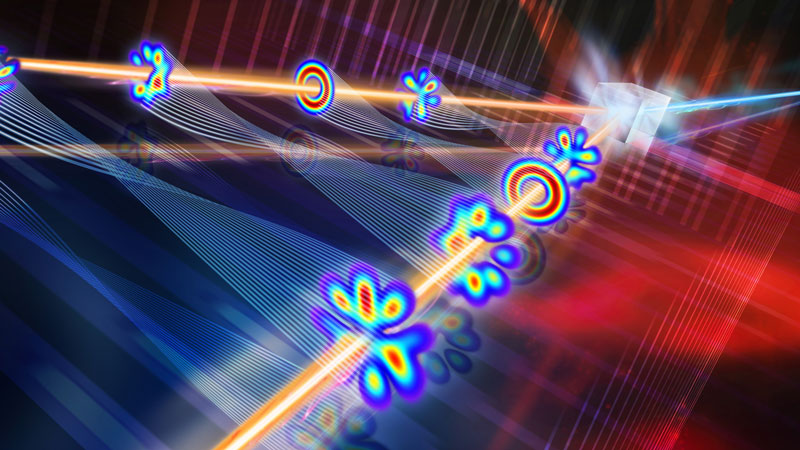16 Jul 2018
Major data breaches have made worldwide headlines of late but an international consortium of scientists—including a professor from Heriot-Watt—have developed a new technique that could result in hack-proof systems.
The researchers have focussed on a complex quantum property known as entanglement, which is a vital ingredient in the quest to protect sensitive data.
In a new paper published today in Nature Physics, the team of scientists from Austria, the Czech Republic, and the UK, reveal a more advanced and noise-robust way to measure the entanglement of high-dimensional quantum systems.
Entangled particles of light behave in an identical manner, irrespective of how far apart they may be. Measurements made on a pair of entangled light particles would always result in correlated outcomes, even if they were physically on different planets. The outcomes of these measurements represent different quantum levels, which can be used as a “quantum alphabet” for encoding information.
As such, entangled states can be used to generate shared strings of random information across large distances, which form an essential part of data encryption. Any attempts to hack this communication would destroy the sensitive entanglement between the two particles and reveal the presence of the attacker.
Entitled ‘Measurements in two bases are sufficient for certifying high-dimensional entanglement' the research has been led by the Institute of Quantum Optics and Quantum Information (IQOQI) in Vienna.
Professor Mehul Malik from Heriot-Watt’s School of Engineering and Physical Sciences, who led the experimental aspect of this new research, said on the discovery: “The most surprising thing about our method is that it requires only two measurements to work, irrespective of how large or complex the entangled state may be!”
Applying their newly developed technique to photons entangled in their spatial structure, the group was able to conclude the structure of entanglement can be unveiled and proven to be truly high-dimensional. They achieved a world record for the highest unconditional dimensionality of entanglement in an experiment of this kind—nine dimensions.
The group is currently looking into a more direct use of this technique in actual quantum cryptography protocols, and expect their technique to be widely applied in other quantum systems such as atoms and superconducting circuits.















